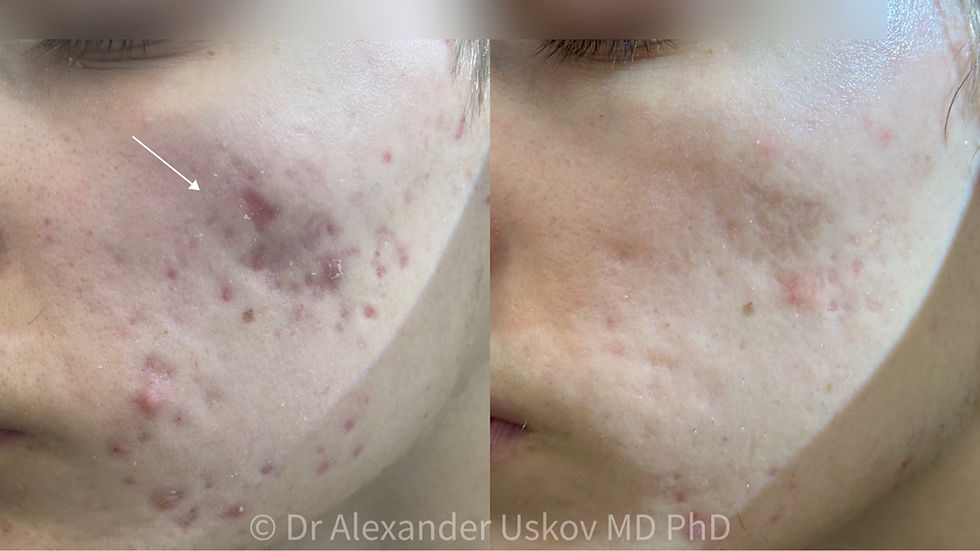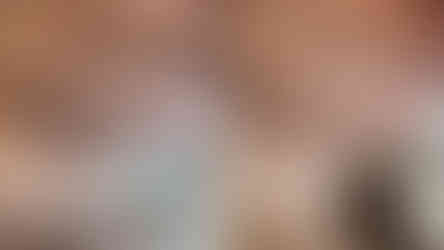Is it possible to perform laser treatment with active acne?
- gertnulk
- Aug 18
- 3 min read
In a nutshell: Yes, but under certain conditions.

Direct exposure to aggressive lasers (e.g., ablative CO₂) during the phase of acute inflammation is generally contraindicated. However, this does not mean that the patient must wait for years until complete remission.
Depending on the clinical situation, at Dr. Uskov’s clinic, it is possible to:
Perform gentle procedures with other lasers and phototherapy treatments that simultaneously improve skin structure and reduce inflammation;
Use a staged treatment protocol where inflammation and scars are corrected in parallel;
Provide a personalized selection of lasers and parameters depending on the area, scar type, and activity of the process.
In most cases, Dr. Uskov’s gentle laser protocols do not require discontinuation of the patient’s primary dermatological treatment.
Which methods do we use?
At Dr. Uskov’s clinic, all major wavelengths approved in international scar treatment practice are used, including:
Non-ablative fractional lasers (Er:Glass, Er:YAG) — in the presence of inflammation;
Picosecond lasers — for correcting post-inflammatory pigmentation and texture;
Nd:YAG lasers — for active erythema and vascular components;
Ablative lasers (CO₂) — after inflammation has stabilized.
Additionally, the following may be prescribed:
PRP (autologous plasma therapy) — with anti-inflammatory and regenerative effects;
Mesotherapy with sebum-regulating agents;
Medication therapy to control inflammation and other supportive methods.
Why is it important not to delay treatment?
The longer scar correction is postponed, the:
deeper the scars become;
higher the risk of secondary defects;
lower the treatment effectiveness;
longer and more expensive the course becomes.
It is especially important to treat fresh scars within the first year after healing of inflammatory lesions. This is the phase when the skin is most responsive to stimulation and collagen remodeling.
Safety is of utmost importance
At our clinic all procedures are performed:
using only certified medical equipment;
by specialists with dermatological and laser training;
following international clinical guidelines.
We carefully rule out contraindications, select gentle protocols, and provide post-procedure patient support.
How many sessions do I need?
Typically, treatment is combined and includes:
3 to 6 procedures at intervals of 4–8 weeks;
Parallel correction of inflammation and scars;
Dynamic adjustment of the program during the course.
What affects the results?
Type and depth of scars;
Activity of the inflammatory process;
Location (face, back, chest);
Age and skin condition;
Overall hormonal and metabolic characteristics.
Pre-treatment diagnostics
Before starting therapy, an in-person consultation is conducted in which the doctor:
Examines the skin;
Uses, if necessary:
Digital dermoscopy;
Wood’s lamp;
Infrared examination;
Ultrasound of the skin and subcutaneous tissue.
This allows detection of hidden inflammation, assessment of scar activity, and selection of the most effective treatment strategy.
Individual results
We do not promise a “miracle” from a single procedure, but we are certain about:
How to minimize risks;
How to gradually improve skin condition even in the presence of inflammation;
How to maintain skin health and beauty long-term.
Before-and-after photos in our clinic’s gallery demonstrate real patient results, including those with active acne.
We are ready to offer scientifically grounded, gentle, and effective methods, even if inflammation is still present. The most important step is to start with a professional consultation and trust the expertise of our specialists.
Want to learn more?
Visit Dr. Uskov’s blog at scarsinfo.com — here you will find materials on scar treatment, acne, post-acne care, and modern medical approaches to complex cases.









Comments